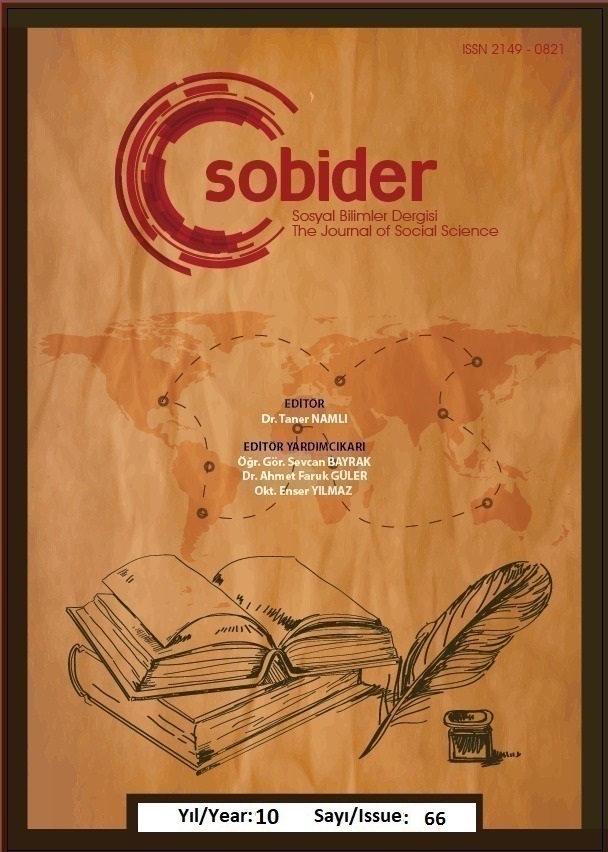Author :
Abstract
Türk dilinin ekleri, yaygın bir biçimde yapım ve çekim ekleri olmak üzere ikili bir sınıflamaya tabi tutulmuş hâlde sunulmaktadır. Anlam değiştiren her ek yapım eki olarak değerlendirilirken, anlam değiştirmeyenler ise çekim ekleri sınıfına dahil edilmektedir. Ancak anlam değiştirmeyen eklerin içinde birbirinden farklı işlevleri yerine getiren birçok ek mevcuttur. Buna göre, Türk dilinin işleyişi için böyle bir sınıflamanın yetersiz kaldığı görülmüş, yapım ve çekim eki dışında başka ek türlerini de ihtiva eden sınıflama tecrübeleri olmuştur. Öne sürülen sınıflamalardan Türk dilinin ekleşme düzeninin karşıtlığa dayalı işleyişi bakımından tartışmaya açık olmayacak şekilde sağlıklı sonuçlar vereni, Turan (2018)’ın onlu ek sınıflamasıdır. Çünkü bu sınıflama Türk dilinin eklerinin, şekillerine göre değil; yer-yapı-işlevlerine göre incelenip değerlendirilmesine dayanmaktadır. Bu sınıflamaya göre, sıfatlama ekleri on ek sınıfından biri olan “isim tamlamasını kuran ekler” üst işlevine bağlı iki alt işlevden biridir. Eldeki çalışmada sıfatlama eklerinin örnekleri, Ahmed Fakįh’in Kitābu Evsāfı Mesācidi’ş- Şerįfe adlı eserinde tespit edilmiş, işlevlerine göre sınıflandırılmıştır.
Keywords
Abstract
Suffixes of the Turkish language are commonly presented in a double classification as derivational and inflectional suffixes. While every suffix that changes meaning is considered a derivational suffix, those that don’t change meaning are included in the class of inflectional suffixes. But there are many suffixes that fulfill different functions. Accordingly, it has been seen that such a classification is insufficient for the functioning of the Turkish language, and there have been classification experiences. Among the classifications the one that provides unquestionably healthy results in terms of the contrastive functioning of the affixation system of the Turkish language is Turan (2018)'s decimal suffix classification. Because this classification isn’t based on the shapes of the suffixes of the Turkish language; it is based on place-structure-function. According to this classification, adjective suffixes are one of the two sub-functions connected to the parent function of "suffixes that establish noun phrases", which is one of the ten suffix classes. In the present study, examples of adjective suffixes were identified in Ahmed Fakįh's work titled Kitābu Evsāfı Mesācidi'ş- Şerįfe and were classified according to their functions.
